Understanding Testicular Hernia: Symptoms and Insights
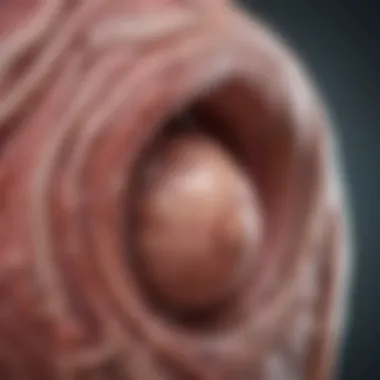
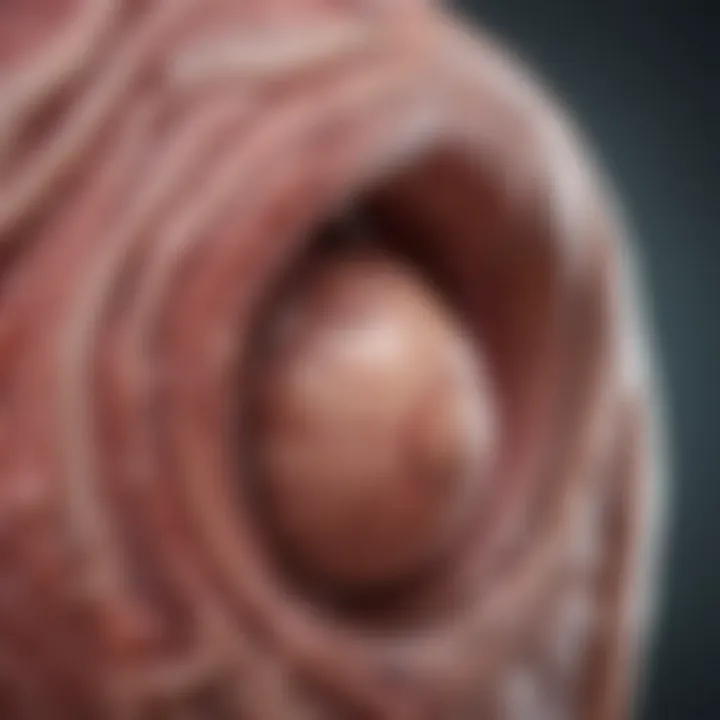
Intro
Testicular hernias are often misunderstood, even among many in the medical community. They don't just pop up overnight, and their implications can be quite serious if not addressed properly. Essentially, a testicular hernia occurs when tissue pushes through a weak spot or tear in the abdominal wall, often ending up in the scrotum.
Understanding these hernias requires a closer look at their symptoms and how they differ, particularly between inguinal and scrotal types. The importance of timely diagnosis and intervention cannot be overstated; it's crucial for preventing more severe complications.
This guide aims to unravel the intricacies of testicular hernias, shedding light on their key features, effective diagnostic methods, and treatment options available. Whether you’re in the healthcare field or just curious about this condition, gaining a clear insight into testicular hernias will empower you to make informed decisions regarding your health or that of others.
Key Findings
Major Results
From examining numerous studies and clinical cases, several vital points emerged about testicular hernias:
- Inguinal hernias are more common in males and often result from strands of tissue exiting the abdominal cavity, while scrotal hernias involve protrusions directly into the scrotum.
- Symptoms can range from mild discomfort to severe pain; swelling in the groin can be a significant indicator.
- Delayed treatment often leads to complications like incarceration or strangulation, which can lead to more serious health issues like testicular necrosis.
Discussion of Findings
The results highlight the necessity for awareness not just among healthcare professionals but also patients. Most individuals may overlook the mild signs until they escalate into more alarming symptoms, potentially putting their health at risk. The discomfort commonly associated with early-stage hernias is often dismissed, leading to delayed diagnoses. While some factors, like obesity and advanced age, may increase the likelihood of developing a hernia, proactive measures, including maintaining a healthy weight and seeking medical advice for any unusual symptoms, can make a significant difference.
Methodology
Research Design
This guide was compiled using a mixed-methods approach, combining qualitative and quantitative research. Through literature reviews, clinical case studies, and patient interviews, a well-rounded perspective of testicular hernias was developed.
Data Collection Methods
Data was gathered from various reputable sources including medical journals, healthcare websites, and academic articles to ensure reliable information. Additionally, forums like Reddit were utilized to gather anecdotal experiences from individuals who have dealt with testicular hernias, offering valuable insights into everyday challenges faced by patients.
By understanding the underlying structure of testicular hernias, we can better appreciate their implications on male health and the critical importance of early intervention.
Intro to Testicular Hernias
Testicular hernias, while often overlooked, represent a significant health concern that can impact many men, particularly those in their younger and middle age. Understanding what a testicular hernia is, along with its symptoms and complications, allows for more informed discussions and decisions regarding health. This article seeks to raise awareness about testicular hernias, highlight their symptoms, and elucidate the potential pathways for diagnosis and treatment. Knowing the various types of hernias—each with unique characteristics—can empower those dealing with or studying them, as well as their families and medical professionals involved in their care.
Defining Hernias
A hernia occurs when an internal part of the body pushes through a weakness in the muscle or surrounding tissue wall. In the context of testicular hernias, this often takes place through the inguinal canal, an area that is part of the abdominal cavity. Hernias can emerge from several factors ranging from congenital predispositions to functional stresses introduced through vigorous activities or heavy lifting. Think of a hernia like a bulging tire—a defect in the material leads to swelling and ultimately a breakdown in functionality.
Types of Testicular Hernias
There are primarily two types of testicular hernias that warrant examination: inguinal hernias and scrotal hernias. Each carries specific characteristics and implications that are crucial for both understanding and effective management.
Inguinal Hernia
The inguinal hernia stands out as the most common form of hernia experienced by men. This type emerges when abdominal contents, often a part of the intestines or fatty tissue, push through the inguinal canal into the scrotum. The key characteristic of an inguinal hernia is its tendency to develop gradually as pressure builds over time, making it a prevalent condition that draws attention within male health discussions. It’s important to note that, while many cases are manageable, ignoring early symptoms can lead to serious complications such as incarceration and strangulation of the intestines. The unique feature of inguinal hernias is that they can be either direct or indirect, with indirect being more common in younger men and direct more prevalent in those over 40. The advantages in focusing on this type are manifold, including better awareness and early detection strategies that can significantly improve outcomes and reduce the burden on healthcare resources.
Scrotal Hernia
On the other hand, we have the scrotal hernia, which is essentially a manifestation of the inguinal hernia but more localized as it protrudes directly into the scrotal sac. The key characteristic of a scrotal hernia is the notable visibility of a bulge within the scrotum, which can often cause discomfort or pain. This form is less common than the inguinal variant but carries similar risks, including complications if left untreated. The unique feature of scrotal hernias lies in their capacity for immediate recognition, both by the individual and medical professionals, due to its more apparent physical manifestation. It’s beneficial to emphasize awareness of this type to ensure swift action is taken when symptoms present themselves.
A thorough understanding of these two types provides a foundation for further exploration into symptoms, causes, treatments, and potential preventive measures for testicular hernias, which is critical for anyone keen on male health.
Anatomy Related to Testicular Hernias
Understanding the anatomy relevant to testicular hernias is crucial for comprehending how and why these conditions occur. The precise positioning and interaction of structures in the male reproductive system directly influence the vulnerability to herniation. By delving into these anatomical features, we gain insight into both the causes and potential complications associated with testicular hernias, ultimately providing a foundation for effective diagnosis and treatment.
Understanding the Male Reproductive System
Testes
The testes are fundamental to male reproductive health. They produce sperm and male hormones, primarily testosterone. This dual function makes them vital not only for fertility but also for overall hormonal balance.
A key characteristic of the testes is their unique location, which should ideally be in the scrotum, outside of the body cavity. This positioning helps regulate temperature, vital for sperm production. However, this location also makes them susceptible to hernias because any slight weakness in the surrounding muscle or tissue can lead to their descent into the inguinal canal or scrotal pouch. In this article, the testes are examined for their role in hernia formation, serving as a critical link between anatomical structures and clinical symptoms of testicular hernias.
Spermatic Cord
The spermatic cord is another significant element here. It encompasses various structures, including blood vessels, nerves, and the vas deferens, all critical for reproductive function. The main role of the spermatic cord lies in providing blood and nerve supply to the testes, as well as housing the duct needed for sperm transportation.
One key feature of the spermatic cord is its pathway through the inguinal canal, which is often where hernias develop. Its relatively narrow passage makes it a site where complications can arise, particularly during heavy lifting or straining activities. In discussing the spermatic cord, we illuminate its contribution to understanding the pathways and risks involved in developing hernias, emphasizing its dual nature—as a conduit for vital functions and as a potential risk factor for herniation.
Inguinal Canal
The inguinal canal serves as a critical passage in the male anatomy, located in the lower abdominal wall. It allows for the descent of the spermatic cord and testes during development, yet remains a common site for hernia occurrences later in life.
A distinctive characteristic of the inguinal canal is its gradient in size and pressure, both of which can contribute to herniation as an individual ages or if they face pressures from external forces such as heavy lifting. Its role in the hernia process makes understanding this canal essential. It's fascinating to note that the anatomy of the inguinal canal can vary significantly between individuals, leading to differences in susceptibility to hernias.
Understanding the anatomical underpinnings of testicular hernias is vital for prevention and effective treatment. Recognizing how the testes, spermatic cord, and inguinal canal interact helps illuminate strategies to mitigate risks associated with hernias.
Mechanisms of Herniation
The mechanisms leading to herniation are often multifaceted and determined by several factors, including anatomical weaknesses, increased abdominal pressure, and certain lifestyle choices. When these forces interact with the body's unique anatomy, the risk of developing a hernia significantly increases. This section deeply explores how these mechanisms unfold, linking symptoms to their anatomical roots, enriching our understanding of this significant health issue.
By taking a close look at both the male reproductive system's features and the mechanisms of herniation, we build a solid foundation for understanding testicular hernias. This knowledge not only aids in recognizing symptoms but also lends a hand in grasping the rationale behind various treatment strategies.
Symptoms of Testicular Hernias
Understanding the symptoms of testicular hernias plays a vital role not only in recognizing the condition but also in ensuring timely intervention. These symptoms can serve as early warning signs, urging individuals to seek medical advice. In this section, we’ll examine both local and associated symptoms, dissecting their significance and implications for male health. Recognizing these signs can contribute significantly to favorable outcomes through early diagnosis and treatment.
Local Symptoms
Pain and Discomfort
Pain and discomfort are typically the first indicators that something might be wrong. This kind of pain is often sharp, sporadic, or sometimes even an annoying dull ache, which can make daily activities challenging. Patients might experience localized discomfort, specifically in the groin area. This symptom is particularly beneficial in pointing towards the possibility of a hernia since other conditions may not present the same sharpness.
One key characteristic of pain associated with testicular hernias is that it usually intensifies with physical activities like lifting heavy objects or sudden movements. Thus, understanding this symptom helps differentiate it from non-urgent issues. However, while this pain can be pivotal in recognizing hernias, it also has its disadvantages. Many men might dismiss the pain as a minor ailment, further delaying the appropriate treatment and worsening the condition.
Swelling


Swelling is another hallmark symptom that can indicate a hernia. It typically appears as a visible bulge in the groin or scrotal region. What sets this symptom apart is its dynamic nature; it can fluctuate depending on the individual’s position. For instance, lying down may reduce swelling, while standing or coughing might exacerbate it.
This symptom is considered quite telling within the broader context of hernias, as it often accompanies the pain. However, swelling can also be a sign of other medical issues, creating a conundrum for diagnosis. Therefore, while swelling serves as an insight into the hernia's presence, it can also sometimes lead to misinterpretation if not examined carefully.
Visible Bulge
A visible bulge can be most distressing yet informative. Often described as an abnormal protrusion, this symptom is usually more apparent when the individual is up and about or making a particular movement. It’s essential to note that even in the absence of discomfort, the sight of such a bulge should prompt a medical consultation.
The key characteristic of a visible bulge is its tangible nature. This manifests as a physical anomaly that often catches attention before any pain is felt. Thus, it becomes significant not just for diagnostic purposes but also as a prominent visual sign that something isn’t right. However, it's crucial to recognize that not all bulges equate to hernias; sometimes they can signal other issues, which necessitates careful assessment.
Associated Symptoms
Nausea
Though less frequently discussed, nausea can tie into the broader picture of testicular hernias. This symptom may arise in conjunction with pain or as a standalone complaint. Nausea can signal that the body is under stress, potentially from the pain or the body's attempt to manage other complications of a hernia.
One unique feature of nausea in this context is its intermittent nature. If it's related to a hernia, feeling queasy can emerge notably during or after physical stress when there’s an increase in intra-abdominal pressure. Recognizing nausea as an associated symptom can support a quicker consultation, emphasizing the link to potential complications like incarceration or strangulation of the hernia.
Vomiting
Vomiting, albeit more severe, may occur in tandem with testicular hernias, especially when complications arise. This symptom can manifest suddenly, often linked to significant distress or pain in the area. What makes vomiting particularly relevant is how it can convey the urgency of medical attention; if someone is experiencing both vomiting and severe pain, it warrants immediate action.
The unique aspect of vomiting is that it underscores the body’s reaction to a serious underlying problem. While it can be alarming, it often serves as a critical flag indicating that a simple hernia could escalate into something far more demanding. Consequently, vomiting significantly contributes to understanding the interfered physical state in the context of a testicular hernia.
Understanding these symptoms can work to an individual’s advantage by promoting awareness and, by extension, facilitating a prompt response to medical help. Recognizing local symptoms like pain, swelling, and the visible bulge, along with associated symptoms such as nausea and vomiting, can empower men to address these signals seriously and proactively.
Risk Factors for Testicular Hernias
Identifying the risk factors for testicular hernias is crucial, as it not only sheds light on the potential causes and contributing elements of this condition but also aids in prevention strategies. Understanding these factors helps to recognize which individuals might be at higher risk, enabling earlier intervention and management. The various elements can be classified into two primary categories: genetic predispositions and lifestyle factors, both leading to a better grasp of how to mitigate risks associated with this condition.
Genetic Predispositions
Genetic predispositions play a notable role in an individual’s likelihood of developing testicular hernias. Family history can influence the physical structure of the abdominal wall and the inguinal canal, increasing susceptibility. For instance, some studies suggest that those with first-degree relatives affected by hernias are more likely to experience similar issues. This heritable nature indicates that it can run in families. The genetic aspect highlights the need for thorough preventive strategies and education, particularly for individuals with a known familial tendency toward hernias. Recognizing this risk factor allows for targeted approaches in managing and monitoring those susceptible.
Lifestyle Factors
Lifestyle factors significantly affect the likelihood of developing testicular hernias. Various elements contribute to the onset of this condition, including:
Obesity
Obesity significantly impacts the development of testicular hernias. Extra body weight puts additional pressure on the abdominal wall, which can lead to a weakening of the muscles. This stress might create an environment where hernias can develop more easily. The key characteristic of obesity in the context of testicular hernias is the increased abdominal pressure it generates. Maintaining a healthy weight can thus serve as a protective measure against developing this condition. However, the challenge here lies in the societal pressures associated with body image and the struggles many face in achieving weight loss. The unique feature of obesity is that it links closely with other medical problems, making it a comprehensive health issue and not merely a cosmetic one.
Smoking
Smoking poses another considerable risk factor. The adverse effects of smoking extend beyond lung health; it can lead to weakened connective tissue, which may facilitate hernia formation. Smoking interrupts blood flow and can impair the healing processes in the body, making it a risk factor not to be taken lightly. The key characteristic of smoking is its multifaceted impact on overall health, which often leads to complications in various areas of the body. Distinctively, this factor is unique since it involves personal choice. Thus, addressing smoking behavior is essential for individual health improvement and reducing hernia risks simultaneously.
Heavy Lifting
Heavy lifting is often unavoidable in certain occupations or lifestyles, whether manual labor, exercise routines, or even hobbies. Engaging in heavy lifting raises intra-abdominal pressure, which can lead to a hernia's development if the abdominal wall is already compromised. The main aspect of heavy lifting in this scenario is the potential to cause immediate strain, leading to the sudden onset of hernias. While physical strength is appreciated in many professions, the unique feature of this risk factor is that it may not just affect those who lift weights solely for fitness; those lifting heavy packages or equipment daily can equally be vulnerable. Promoting proper techniques and strategies to manage heavy lifting might prove beneficial for those in riskier professions, creating a safer environment and limiting hernia occurrences.
In summary, understanding these risk factors provides valuable insight into testicular hernias. Each element, whether genetic or lifestyle-based, bears significance in enhancing awareness and prevention strategies, ultimately aiming for better outcomes in male health.
Diagnosis of Testicular Hernias
Diagnosing a testicular hernia is a critical step in managing this condition effectively. An understanding of how to identify testicular hernias can lead to better outcomes for patients. A clear diagnosis not only facilitates timely intervention but also minimizes the risk of complications that could arise from delays in treatment.
The process of diagnosing a testicular hernia typically begins with a thorough patient history followed by physical examination. Healthcare providers gather information regarding symptoms, such as pain or swelling, and any precipitating factors, such as heavy lifting or long-standing strain. Proper diagnosis often hinges on careful attention during the physical examination, as this step is instrumental in distinguishing between an actual hernia and other similar conditions.
While the physical exam is paramount, imaging techniques are essential in corroborating the findings and arriving at a definitive diagnosis. These imaging modalities provide critical visual insights, ensuring that the physician has all the information necessary to formulate a treatment plan.
Physical Examination
During a physical examination, the healthcare professional typically checks for any noticeable bulging in the groin or scrotum area. The patient is often asked to cough, which can help make the hernia more apparent. This examination includes detailed palpation and observation. The goal is to determine if a hernia is indeed present and to assess its size and location.
Finding a bulge, especially one that comes and goes, can be a strong indicator of a hernia. Additionally, tenderness or pain in these areas during examination can further support the initial diagnosis. While this methods primarily relies on clinician experience, it serves as a crucial step in the diagnostic process.
Imaging Techniques
If physical examination suggests the possibility of a hernia, imaging techniques are employed to confirm the diagnosis and evaluate the extent of the condition.
Ultrasound
One of the most commonly used imaging techniques for diagnosing testicular hernias is ultrasound. This method is non-invasive and does not involve radiation, making it a preferred choice for many clinicians.
The key characteristic of ultrasound is its ability to provide real-time images of the soft tissues, including the scrotum and surrounding structures. It is particularly useful in distinguishing between different types of hernias and other conditions like hydroceles or tumors.
The unique feature of ultrasound is its ability to visualize the contents of the hernia sac, allowing healthcare providers to identify whether it contains bowel or other tissues. An advantage of ultrasound is its portability and speed; results can be immediate and help guide decisions.
However, it does have limitations, such as difficulty in assessing larger hernias or in cases with significant obesity, where visualization may be compromised.
CT Scan
The computed tomography (CT) scan is another imaging option that can be utilized for diagnosing testicular hernias. This method is highly detailed and provides a cross-sectional view of the abdominal and pelvic areas, making it useful for more complex cases.
A major advantage of a CT scan is its ability to gather extensive data in a single examination, providing comprehensive details about the hernia’s characteristics. It excels at revealing the relationships between different anatomical structures, which can be crucial for surgical planning.
However, the use of CT scans is associated with exposure to radiation, which can be a disadvantage, particularly in younger patients. It's often reserved for complicated or inconclusive cases that require more than a standard evaluation.
MRI
Magnetic resonance imaging (MRI) is another powerful tool that can assist in diagnosing testicular hernias. It uses strong magnets and radio waves to create detailed images, making it particularly effective for soft tissues.
A notable characteristic of MRI is that it does not involve ionizing radiation, providing a safer alternative compared to CT scans for repetitive assessments. This imaging technique is beneficial when unusual or complex conditions are suspected, as it offers superior contrast resolution.
However, MRI is generally more expensive and less accessible than other imaging options, which may be a consideration depending on a patient’s insurance and healthcare coverage. It may take longer to perform, and not all facilities are equipped with the necessary technology.
In summary, the diagnosis of testicular hernias combines careful physical examinations with the use of various imaging techniques to ensure clear and accurate identification of the condition. Each method has its strengths and drawbacks, and the choice of technique often depends on individual patient circumstances. Identifying these hernias early on is a key factor in effective management and can significantly influence the treatment path chosen.
Differential Diagnosis
Differential diagnosis plays a critical role in understanding testicular hernias. It involves distinguishing between testicular hernias and other medical conditions that present similar symptoms. Accurate diagnosis is key to ensuring proper treatment, as some conditions, if misdiagnosed, can lead to severe complications. The knowledge of different possibilities helps both patients and healthcare professionals navigate the landscape of male reproductive health with clarity.
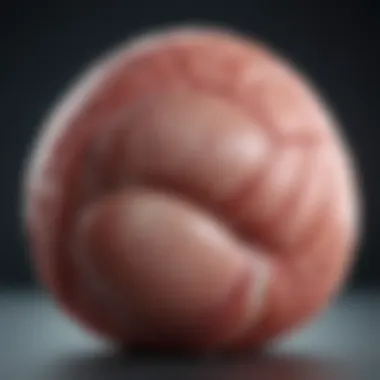
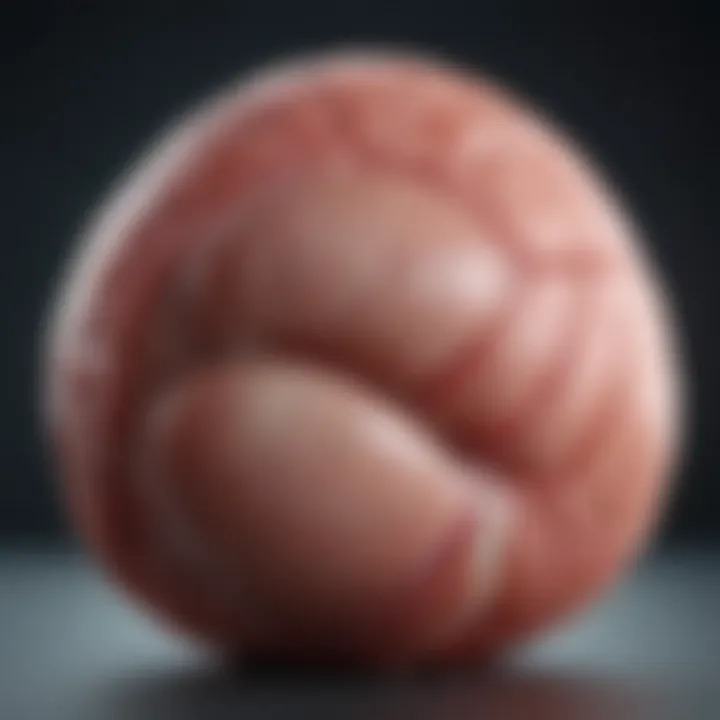
Understanding the nuances between hernias and other testicular conditions can significantly impact patient management plans. For those experiencing discomfort, a timeline of symptoms and specific characteristics of pain can guide practitioners in making informed decisions. Additionally, for patients, recognizing these subtle differences can be empowering in seeking appropriate medical intervention.
Distinguishing Hernias from Other Conditions
Hydrocele
Hydrocele is an accumulation of fluid around the testicle. A key characteristic of hydrocele is its tendency to cause swelling in the scrotum, which can lead to confusion with hernias, as both can present with a visible bulge. Hydroceles are often painless, which makes them an important consideration in differential diagnosis. For the purpose of this article, understanding hydrocele is incredibly beneficial as it reminds practitioners and patients alike to consider the underlying causes of related symptoms.
Unique Feature of Hydroceles
Hydroceles can often be diagnosed through a simple physical examination and may be confirmed with ultrasound, highlighting their manageable nature. In terms of treatment, hydroceles do not always require surgical intervention unless they cause discomfort or complications.
Advantages:
- Generally harmless and asymptomatic
- Usually resolves without intervention
Disadvantages:
- Can confuse diagnosis with hernias, prolonging proper treatment
Testicular Torsion
Testicular torsion is a surgical emergency characterized by the twisting of the spermatic cord, which can lead to decreased blood flow to the testis. It is recognized as one of the most crucial conditions to differentiate from hernias due to its potential consequences. The hallmark of testicular torsion is sudden, severe pain that often radiates into the abdomen, alongside swelling. This distinctive symptom set sets it apart from the gradual development often associated with hernias.
Unique Feature of Testicular Torsion
The urgency of testicular torsion cannot be overstated—it typically requires immediate surgical intervention to salvage the affected testis. Failure to do so within a few hours can lead to irreversible damage, making it vital for healthcare providers to distinguish between torsion and hernias promptly.
Advantages:
- Immediate treatment improves outcomes
- Close attention to symptoms can prevent complications
Disadvantages:
- Urgency can cause panic and necessitate rapid decision-making without full diagnostic understanding
Conclusion:
In summary, distinguishing between testicular hernias and other conditions like hydrocele and testicular torsion is not merely a matter of academic interest; it has tangible implications for patient care and outcomes. A keen eye on these differentials—and an understanding of their respective presentations—remains a cornerstone of effective management in male reproductive health. The key is a thorough assessment by healthcare professionals, coupled with informed and engaged patients.
Treatment of Testicular Hernias
Treating testicular hernias is an essential part of managing this condition effectively. Early intervention can significantly influence outcomes, reducing the risk of complications and enhancing quality of life. Understanding available treatment options can empower patients and healthcare providers alike to make informed decisions.
Surgery is the standard approach for most cases of testicular hernias, specifically those that cause pain or discomfort. However, non-surgical management can be a consideration in certain scenarios.
Surgical Options
When it comes to surgery, there are generally two main techniques: open repair and laparoscopic repair. Each has its specific characteristics and implications for recovery and health.
Open Repair
Open repair is often considered the traditional method for addressing testicular hernias. The procedure involves making a larger incision to access the herniated tissue. One of its key characteristics is the straightforward nature of the operation. Surgeons have direct access to the affected area, allowing for clear visualization and manipulation of the hernia.
This method is popular due to its effectiveness and has been practiced for many years, establishing a solid track record.
The advantages of open repair include:
- Easier identification and repair of the hernia sac.
- Lower cost due to fewer resources required compared to laparoscopic options.
However, there are disadvantages as well. The recovery period tends to be longer, and the incision can result in more pain post-surgery. Potential complications such as infections at the surgical site and scarring also need to be considered.
Laparoscopic Repair
Laparoscopic repair has gained traction, mainly due to its minimally invasive nature. In this approach, the surgeon makes several small incisions and uses a camera (laparoscope) to guide the repair process. One of the standout features of this method is the reduced trauma to the surrounding tissue.
The key characteristic of laparoscopic repair is its ability to offer:
- Faster recovery times, allowing many patients to return to daily activities sooner.
- Minimal scarring, which can be aesthetically preferable.
Nonetheless, this method also has its caveats. It typically requires specialized surgical training and equipment, which can increase costs. Additionally, there may be a steeper learning curve for inexperienced surgeons.
Non-Surgical Management
In some cases, non-surgical management could be an option, particularly when the hernia is asymptomatic or small. This involves observational strategies, such as watchful waiting. Patients might also receive advice on lifestyle modifications to alleviate symptoms, such as avoiding heavy lifting or treating discomfort with over-the-counter pain relievers. However, it’s pivotal to remember that non-surgical approaches do not fix the hernia itself; they only manage the symptoms.
In summary, the treatment of testicular hernias can range from surgical intervention to non-surgical management options, each with unique benefits and considerations. Understanding these choices better equips patients to engage with healthcare providers about the optimal approach for their situation.
Postoperative Care and Recovery
Postoperative care plays a critical role in the overall healing process following surgery for testicular hernias. This period can significantly influence not just recovery speed but also long-term outcomes. Managing the immediate aftermath and ensuring proper long-term care is essential for preventing complications and facilitating a smooth return to daily activities.
Immediate Post-Surgery Care
Immediate care after surgery focuses on monitoring the patient's condition and providing necessary support. After the operation, patients often find themselves resting in a recovery room, where healthcare professionals keep a close eye on vital signs and overall comfort. This part of care is not just about observation; it often involves providing medications to manage pain, preventing infection, and controlling any swelling that might occur.
The benefits of attentive immediate care can't be overstated. Adequate management of pain ensures that the patient remains comfortable, which is crucial for effective recovery. In addition, nurses or aides will typically educate patients on signs of complications, indicating when they should seek further medical attention.
This immediate care often includes:
- Administering pain relief medication
- Monitoring vital signs
- Providing fluids and nourishment
- Advising on wound care to prevent infections
Long-term Recovery
As patients move into long-term recovery, the focus shifts towards regaining strength and fully returning to pre-surgery activities. This phase can vary in duration, depending on a variety of factors including the individual’s overall health, the type of surgery performed, and how well they stick to recovery recommendations.
Physical Activity
When it comes to physical activity during recovery, it’s important to strike a balance. Initially, patients might be advised to limit strenuous exertions or heavy lifting. However, gradual reintroduction of light activities can be beneficial. Exercise helps improve blood circulation, boost morale, and strengthen the body.
A key characteristic of physical activity post-surgery is its adaptability. Low-impact exercises, like walking or gentle stretching, can often be resumed relatively early in the recovery process. These activities serve as a gentle push towards regaining mobility, which is crucial for avoiding complications such as blood clots or muscle atrophy.
Some unique features of physical activity during recovery include:
- Improvement of Circulation: Enhances blood flow, which can aid healing.
- Stress Relief: Gentle exercises can help alleviate anxiety surrounding recovery.
- Muscle Fortification: Maintains strength and fitness levels, helping a return to normal activities.
On the downside, overdoing physical activity can lead to unnecessary strain or even setbacks, making it vital for patients to listen to their bodies and consult healthcare professionals before attempting new exercises.
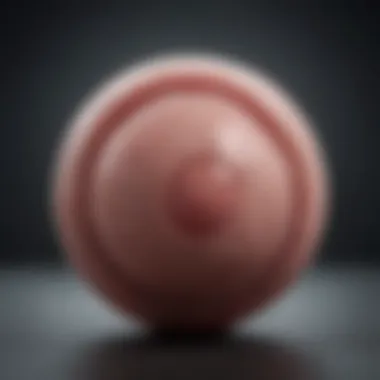
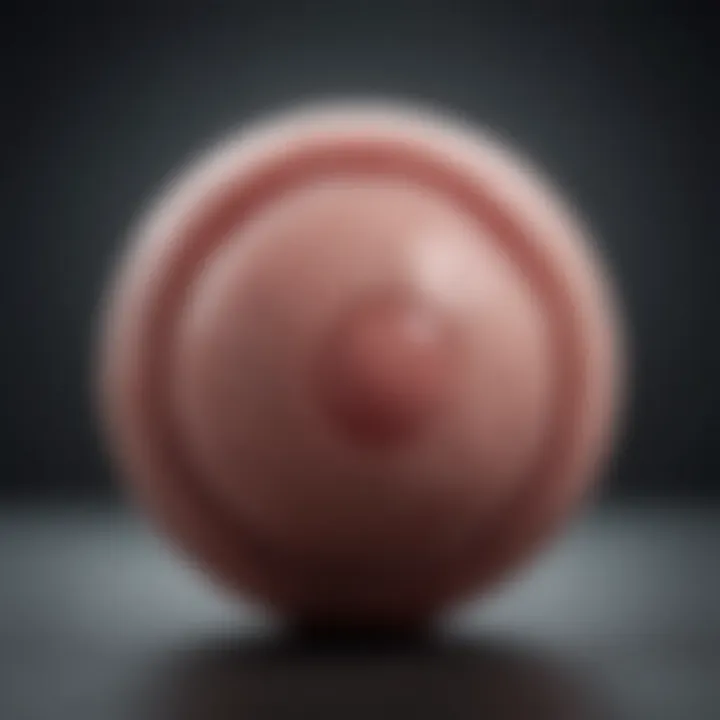
Follow-up Appointments
Follow-up appointments are an integral part of the recovery process. Scheduling these visits provides healthcare providers the opportunity to monitor healing and address any concerns that may arise. These appointments serve as checkpoints for assessing the surgical site, managing potential complications, and discussing any ongoing symptoms.
A significant aspect of follow-up appointments is their preventive nature. Early identification of problems can help avoid more severe issues down the line. Patients are usually encouraged to discuss any changes in condition honestly.
Some unique features of follow-up appointments include:
- Regular Monitoring: Allows for acute issues to be noticed swiftly.
- Adjustment of Medications: Understanding how the patient is responding and making necessary changes to medication.
- Guidance on Activities: Helping patients know when they can safely resume various activities, from sports to heavy lifting.
As an advantage, these appointments reinforce accountability, encouraging patients to stay engaged with their healing path. On the flip side, some may find them inconvenient, but prioritizing these visits can greatly enhance recovery outcomes.
"Timely follow-ups can be the safety net that catches complications before they balloon into major setbacks."
Overall, both immediate care and long-term recovery strategies contribute to a comprehensive and successful rehabilitation process after surgery for testicular hernias.
Complications Related to Testicular Hernias
When discussing testicular hernias, understanding the complications that can arise is crucial. Complications can significantly impact a patient’s quality of life and may pose serious health risks. Every hernia case has its peculiarities, but recognizing potential complications helps in timely intervention and effective management.
Potential Risks During Surgery
Surgical intervention is often necessary to correct testicular hernias, yet it does carry certain inherent risks. These risks can include infection at the surgical site, bleeding, and damage to surrounding structures. Some individuals may experience anesthesia-related complications, which can be particularly concerning for those with preexisting health conditions. Moreover, there’s always a chance of obtaining the wrong diagnosis or mismanaging the repair, leading to not just physical discomfort but also emotional distress. The need for a thorough pre-surgical evaluation cannot be stressed enough. Discussing these risks openly between the patient and the healthcare provider fosters trust and understanding, essential components in resolving health dilemmas.
Long-term Complications
Recurrence
Recurrence is one of the most dreaded outcomes following a herniorrhaphy. Even after successful surgery, some patients may find themselves facing another hernia down the line. This happens due to a few factors, like the initial weakness of the abdominal wall or improper technique during the first surgery. Recurrence is not just a nuisance; it can lead to repeated surgeries, extended recovery times, and additional strain on an individual's mental well-being. Understanding the characteristics that contribute to recurrence helps patients engage better with their treatment options. For instance, some surgical techniques may boast lower recurrence rates, informing patient decisions in pursuing those pathways.
Chronic Pain
Chronic pain is another complication that can often be overlooked but significantly affects the life of someone who has undergone hernia repair. This pain, which persists long after the initial healing process, may arise from nerve damage or scar tissue formation. It can present itself in various forms, oftentimes disrupting daily activities and leading to a reduced quality of life. Recognition of chronic pain as a potential long-term consequence of hernia surgery is integral in preparing patients for their recovery journeys. There exists a complex relationship between pain management post-surgery and the psychological impact that comes with it. Addressing pain through appropriate channels, such as physical therapy or medications, is essential for ensuring a successful recovery full of activity and motion.
"It's essential to understand the implications of surgery on overall health, as complications such as recurrence and chronic pain can alter a person's path significantly. Awareness is the first step toward prevention."
Being informed about these complications allows patients, families, and healthcare professionals to engage in a more comprehensive and proactive approach to managing testicular hernias. Educating oneself about the potential risks aids in making informed decisions and ultimately contributes to enhanced recovery outcomes.
Prevention Strategies
Addressing testicular hernias through prevention is crucial. With the right strategies in place, individuals can significantly reduce their risk. This awareness also empowers individuals to take control of their health, fostering a proactive approach towards potential complications.
Lifestyle Modifications
Modifying daily habits can be a powerful way to prevent testicular hernias. Here are some practical changes:
- Maintain a Healthy Weight: Excess weight places additional strain on the abdominal wall, which may lead to hernias. A balanced diet rich in fruits, vegetables, and whole grains can certainly help in shedding some pounds.
- Strength Training: Engaging in regular strength training exercises strengthens not only muscles but also connective tissues, enhancing abdominal wall integrity. Focusing on core exercises like planks or bridges can help.
- Avoid Heavy Lifting: If lifting is a part of daily routines, it's crucial to use proper techniques. Bend at the knees and keep the load close to your body to lessen pressure on the abdomen.
- Stop Smoking: Smoking may weaken connective tissues, thereby increasing the chances of a hernia. Quitting can have numerous benefits for overall health.
By incorporating these modifications, individuals can create a stronger foundation for their health.
Awareness and Education
It's not just about making lifestyle changes; awareness and education play pivotal roles in prevention. Understanding the risk factors and symptoms could make a significant difference.
- Educating Others: Sharing knowledge about testicular hernias with family and friends helps create a more informed community. Knowledge can lead to early detection and prompt treatment, which may prevent complications.
- Understanding Symptoms: Recognizing early warning signs, such as swelling or discomfort, allows for swift action. Being aware means not shrugging off symptoms as mere inconveniences.
- Regular Check-ups: Encouraging regular medical check-ups can lead to earlier interventions if hernias are suspected. Engaging healthcare professionals will help you stay abreast of personal health needs.
"An informed individual is more equipped to act. Education can truly be the first line of defense against testicular hernias."
Psychosocial Aspects of Testicular Hernias
When addressing testicular hernias, it’s easy to get caught up in the medical jargon and forget about the human element of this condition. Psychosocial factors play a crucial role in how individuals cope with testicular hernias, both during the diagnostic phase and throughout the treatment journey. Understanding these aspects is vital for healthcare providers and patients alike, as it enhances the overall approach to care and recovery.
Impact on Mental Health
Testicular hernias can bring about a whirlwind of emotions for patients. The mere presence of a hernia can evoke feelings of anxiety and discomfort. Patients may experience a constant worry about complications or the nature of the condition itself. Moreover, undergoing surgery can amplify pre-existing fears related to physical health and body image.
A study noted that the psychological impact of surgical procedures, especially in the male demographic, tends to be underappreciated. Anxiety might stem from concerns about sexual health or fertility, given the proximity of the affected area to the reproductive organs. Feeling isolated in their struggles can worsen these mental health issues, leading to an increase in depression or social withdrawal. Here are a few implications on mental health associated with testicular hernias:
- Fear of surgery: Many individuals dread the thought of going under the knife, leading to heightened stress levels.
- Body image concerns: Men often attach significance to their physicality, and any changes can lead to self-esteem issues.
- Social stigma: There can be a feeling of shame or embarrassment, deterring patients from seeking timely care or discussing their situation.
It's important for patients and their families to acknowledge these feelings, as understanding them can pave the way for more effective coping strategies.
"Mental health is just as important as physical health when managing a condition. Addressing psychosocial aspects can significantly enhance the experience and outcomes for patients."
Support Systems and Resources
Navigating life with a testicular hernia is often not a journey to be taken alone. Support systems are essential, providing a buffer against the psychological stresses that arise. Families, friends, healthcare professionals, and support groups can offer much-needed emotional backing.
Here are some ways to build a supportive network:
- Family and Friends: Sometimes, talking it out with loved ones can alleviate fears and provide grounding during uncertain times.
- Support Groups: Engaging with those who have similar experiences can foster a sense of belonging and understanding. These groups can often be found both in-person and online, adding accessibility. Platforms such as Reddit and Facebook have communities where individuals share their struggles and coping methods.
- Professional Counseling: A mental health professional can help manage anxiety, depression, and body-image issues stemming from the hernia. Cognitive-behavioral therapy (CBT) is one effective method for addressing negative thought patterns that might arise.
Accessing reliable resources is also key. Patients can turn to online medical communities for guidance, but it is crucial to ensure that the advice received is grounded in reputable research. Websites such as Britannica and Wikipedia provide valuable information, while online forums create a space for shared experiences.
Culmination
In wrapping up the discussion on testicular hernias, it’s vital to acknowledge the significance this topic holds, not just for medical professionals but for the general male populace. Testicular hernias, though often overlooked in everyday conversation, can have profound implications on male health and quality of life.
Summarizing Key Points
To recap, a testicular hernia occurs when tissue, which can include parts of the intestine or fat, escapes from its normal cavity in the body, typically through the inguinal canal in the groin area. Among the important themes discussed, we highlighted the following:
- Symptoms: Recognizing symptoms such as pain, swelling, and an observable bulge is crucial for timely intervention.
- Diagnosis: A combination of physical exams and imaging techniques like ultrasounds plays a key role in identifying the condition.
- Treatment Options: Both surgical and non-surgical management strategies were examined, emphasizing the importance of personalized care based on individual circumstances.
- Complications: Understanding potential long-term issues such as recurrence or chronic pain after treatment is also essential.
These central points create a solid foundation for understanding the complexity associated with testicular hernias. It’s clear that early detection and intervention are key to preventing severe complications that may arise if left untreated.
Call to Action for Awareness and Research
As we conclude, there remains a pressing need for increased awareness about testicular hernias. It is not merely enough for health care providers to understand these issues; patients and the general public must also be educated. Initiatives could include:
- Promoting awareness campaigns that highlight the symptoms and risks associated with testicular hernias.
- Facilitating open discussions in schools and community forums to reduce the stigma around male reproductive health issues.
- Encouraging further research into less invasive treatment options and summarizing long-term outcomes of existing treatments.
Increasing awareness can empower individuals to recognize symptoms early and seek appropriate care, ultimately resulting in better health outcomes. Therefore, it's crucial to translate findings from the medical community into actionable insights for those who might be affected. By bridging this gap, we can significantly enhance the understanding and management of testicular hernias.
"Awareness leads to early diagnosis; early diagnosis ensures better treatment."
In the pursuit of overall male health, let’s not shy away from discussing testicular hernias. With the right information and resources, we can play our part in enhancing health literacy and encouraging proactive health behaviors.



